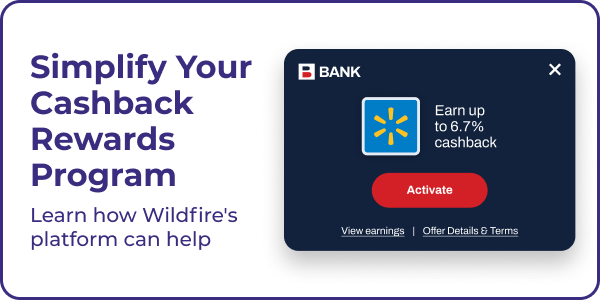In Part 1 of this series, my illustrious colleague Michelle Wood outlined some of the challenges with relationship-building and maintaining a robust network of merchants to power a cashback rewards loyalty program.
If you're familiar with the affiliate space, names like CJ, Impact, and Rakuten will sound familiar. These are what's known as affiliate marketing networks. Merchants tend to build relationships with established affiliate networks for a variety of reasons, but primarily because it makes administering an affiliate program easier for them.
Through an affiliate marketing network, merchants can streamline the work of managing their affiliate program, by doing activities like providing offers to their publishers, tracking the performance of each one, and recruiting new publishers to work with.
Most merchants run their program on a single network, so if a business launching their own cashback program chooses to only integrate with one, they will greatly reduce merchant coverage. This means that anyone interested in building a robust cashback rewards program with as many merchants as possible, will have to integrate with as many of those affiliate networks as possible.
The need to work with many networks means **dramatic trumpets** you're going to have to work with their APIs and datafeeds, all of which vary greatly from network to network, making normalization of that data for attributing, tracking through the commission lifecycle, and paying out commissions to end users extremely challenging.
So, let's talk about that!
Why Normalizing Affiliate Network Data is so Important
It should come as no surprise that all the affiliate network datafeeds and APIs behave differently and have "the same" data described in different ways. For example, something as seemingly simple and innocuous as "Merchant Name" is described differently across the networks! Some call it Merchant, some Advertiser, some Program, some Campaign - it's all over the place.
Wildfire is now integrated with 15 different affiliate networks. For each one, we've had to establish a minimum amount of data that we require. In turn, we built a system that ingests all of the disparately-named data provided, normalizes it, and then maps it to the data set in our system which captures the relevant tracking & attribution data for completed cashback-earning transactions.
Beyond Normalizing Affiliate Network Data: Attribution Challenges
Wildfire is a B2B enterprise shopping rewards platform, and our clients are the businesses who seek to integrate cashback rewards into their customer offering with tools such as our cashback browser extensions and coupon feeds.
This means that the additional challenge for our platform, on top of normalizing merchant metadata and transaction data for 15 affiliate networks, is that it must be able to accurately tell which customer, for which client, at which merchant, completed a cashback-reward-earning transaction.
This requirement exists so that we can correctly attribute that transaction to the actual customer who made the purchase and reward them their cashback.
Accounting for E-Commerce Returns
Another challenge working in the cashback and online shopping rewards industry, is that a platform must account for the whole "commission lifecycle." In essence, this refers to the window of time in which a merchant considers a transaction to be settled, and approved to pay a commission on. This window varies by merchant, but for the sake of simplicity let's say it's 90 days.For example, let's say a customer completes an order at Macys.com from one of our clients' cashback browser extensions on March 1. Technically, Macys.com has a 90 day window in which they wait for that transaction to settle before they approve the commission and the customer earns a cashback reward.
But what if that customer's order has 5 items in it, and they return 1 of them? Or all of them? Or one of the items does not qualify for cashback?
If the order is modified in any way in that 90-day window, it will likely affect the amount of cashback that customer earns. The merchants obviously won't pay commission on a returned, partially returned, or ineligible order, so we won't tell the client to pay that customer a reward. In turn, we must keep strictly accurate records of any order modifications too in case the customer inquires about their cashback earnings.
Closing the loop, on day 91, we will receive data from the merchant via the affiliate network that the Macys.com order status is "Approved" (with any order modifications due to returns being accounted-for) and can be paid-out on.
Through our integrations with the affiliate networks, we ingest all that incoming affiliate network data and normalize it. This way, we have an accurate historical record of each transaction so that we can correctly reconcile order changes and tell our clients what cashback their customers earned so those end customers ultimately receive their expected rewards.
What Could Go Wrong?
Obviously, dealing with such a high level of complexity around record-keeping and attribution means that there's margin for error. However, we have a good process in place for checks and balances and we thoroughly audit and reconcile, through both manual and automated means, all of our commissionable transactions and expected cashback payouts for each customer at each client.
It's a lot, but we hold ourselves to a high standard. We simply must maintain completely accurate records to maintain trust with our clients and their relationships with their customers.
Conclusion
I hope you can appreciate how hard and complex the work to build a cashback rewards program is, across all the affiliate networks, all our clients, and all their end-user customers that we support! Our value proposition as an enterprise cashback rewards platform is that we have already done all of this legwork for our clients.
In effect, clients can simply "plug in" to our platform and have access to this network of merchants and all the disparate affiliate networks' transaction records so they have a seamless single point of contact for delivering cashback at tens of thousands of merchants.
It's important to remember that we're always improving right under the hood, too. This isn't a set-it-and-forget-it function at the company. The qualities of resilience, reliability, and normalization are a point of pride for Wildfire. Hopefully this gives you some idea of the work we are constantly doing to maintain our position as the leading, most trusted, enterprise-grade cashback rewards platform.






